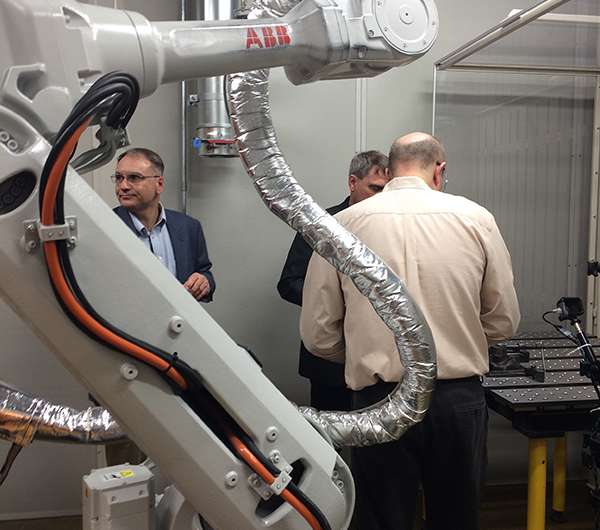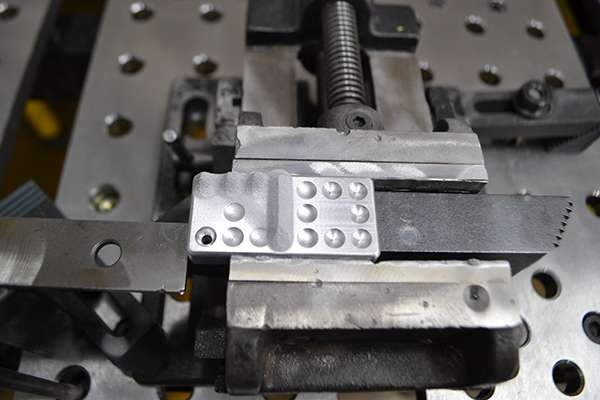Cold spray technology to repair surfaces of corroded aircraft parts

Faster, market competitive and safer airplane repairs. That's the goal of a project by The University of Akron and Airborne Maintenance and Engineering Services in obtaining Federal Aviation Administration (FAA) approval for "cold spray" repair of corroded and worn parts on commercial aircraft.
Promising demonstrations and test results of this application were showcased at Airborne Maintenance and Engineering Services at the Wilmington Air Park on March 27. Members of the Ohio General Assembly – including Speaker of the Ohio House of Representatives Cliff Rosenberger and Ohio Senate President Pro Tempore Bob Peterson – viewed progress of Supersonic Particle Deposition (SPD), a groundbreaking aircraft repair method for applying metal particles to rebuild the surfaces of corroded and worn parts.
Boost to economy expected
By extending the useful life of an aircraft's parts, this public-private partnership initiative is anticipated to lead to the first FAA certification for full-scale commercial aircraft repair operations. For a region that is actively expanding the job market by developing emerging technology to grow the aviation sector, this approval is another step forward in additional jobs and economic development opportunities.
The technique involves a high pressure spraying process in which metal particles contained in a supersonic jet of an expanded gas impact a solid surface with sufficient energy to cause bonding with the surface. This additive manufacturing process builds up and repairs the surface of the metal part without creating a heat-affected zone that would occur during welding or high temperature thermal spray.

Development and testing has been underway for two years, funded by the Ohio Legislature in the last Operating Budget, and supported by The University of Akron's National Center for Education and Research on Corrosion and Materials Performance (NCERCAMP) in collaboration with Airborne Maintenance and Engineering Services (AMES), SAFEngineering, Inc., and U.S. Technology Corporation. The data gathered has provided the foundation with the information required for FAA approval of SPD dimensional restoration of aircraft structure.
Significant opportunities for growth
This collective effort has produced numerous achievements with the SPD technology highlighting the effectiveness of public-private partnerships for economic growth. Once the goal of this program is attained, the application of the process is limitless across the commercial aviation sector.
"This technology in commercial applications creates significant ongoing opportunities for economic advancement in Ohio through advanced manufacturing and job growth," said Greg Smith, director of engineering for Airborne Maintenance and Engineering Services.
UA's Corrosion Engineering program is the first of its kind in the United States. Housed at The University of Akron, NCERCAMP provides a multidisciplinary approach to help government and industry develop solutions for corrosion and materials performance challenges. In response to requests from private industry and the Department of Defense in 2006, The University of Akron launched an effort to help address the cost of corrosion on the nation's economy, estimated at more than $400 billion annually. In 2010, NCERCAMP was established by Congress and the U.S. Department of Defense.
Provided by University of Akron




















